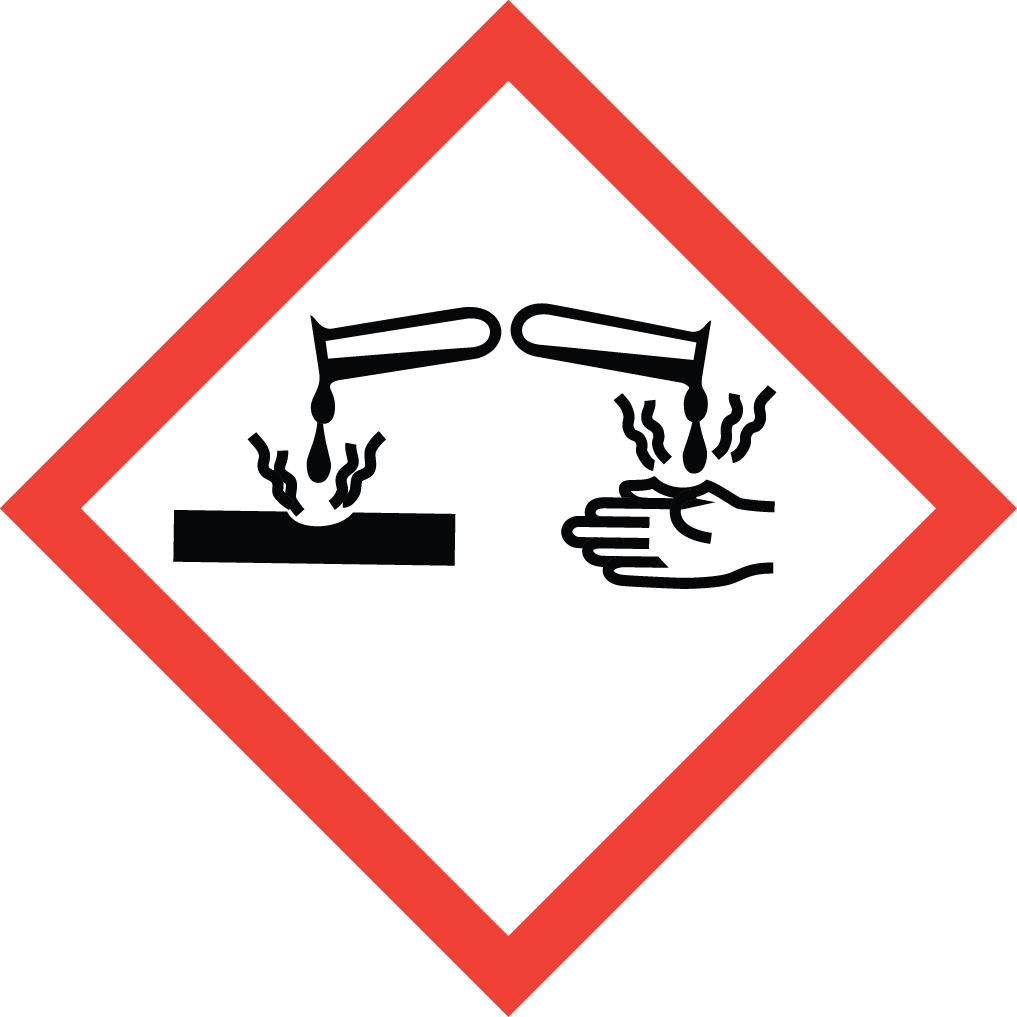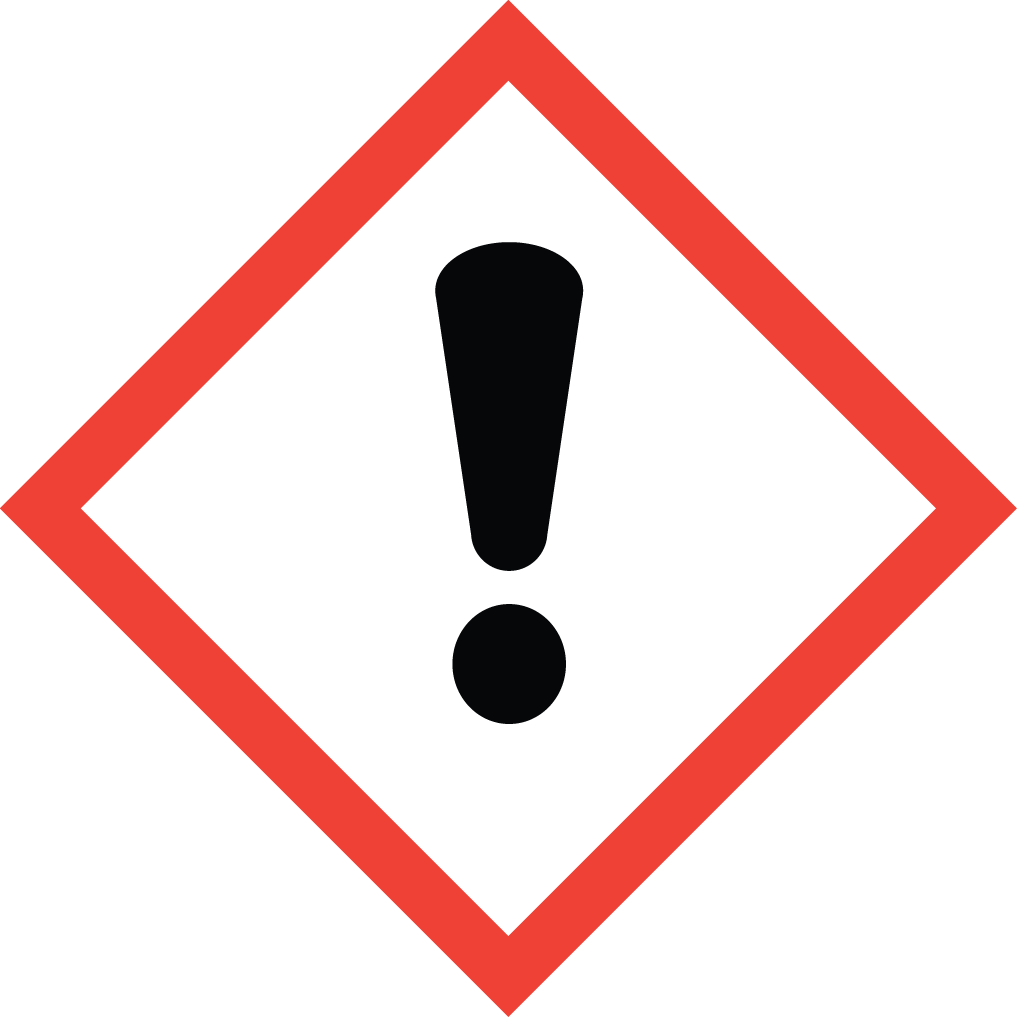Version 3.0
Date revised: 4/26/2019
SAFETY DATA SHEET
Conforms to regulation (EC) no. EU 453/2010
SECTION 1 - IDENTIFICATION OF THE SUBSTANCE/MIXTURE AND OF THE COMPANY/UNDERTAKING
1.1 Product Identifier
1.2 Relevant Identified Uses of the Substance/Mixture and Uses Advised Against
Investigational research by professional users
1.3 Details of the Supplier of the Safety Data Sheet
| Manufacturer National Diagnostics 305 Patton Drive Atlanta, GA 30036 (404) 699-2121 (800) 526-3867 info@nationaldiagnostics.com |
1.4 Emergency Telephone Number
ChemTel Inc.
Contract number MIS8894340
1-800 255-3924 (United States, Canada, Puerto Rico & US Virgin Islands)
01-800-099-0731 (Mexico)
400-120-0751 (China)
000-800-100-4086 (India)
1-300-954-583 (Australia)
0-800-591-6042 (Brazil)
+1-813-255-3924 (All other regions)
SECTION 2 - HAZARDS IDENTIFICATION
2.1 Classification of the Substance or Mixture
Classification according to Regulation (EC) No. 1272/2008 [EU-GHS/CLP]
H290 - Corrosive to Metals
H314 - Skin Corrosion/Irritation (Category 1B)
H335 - Specific Target Organ Toxicity, Single Exposure (Category 3)
2.2 Label Elements
| GHS Label Elements | ||
 |  | DANGER H290 - May be corrosive to metals. |
2.3 Other Hazards
None found.
SECTION 3 - COMPOSITION/INFORMATION ON INGREDIENTS
3.2 Mixture
Chemical Names/Description
Buffered inorganic acid.
Component List
| Component | % Comp. | CAS # | EC # | 1278/2008 Classification |
|---|---|---|---|---|
| Hydrochloric Acid | 3 - 5 | 7647-01-0 | 231-595-7 | H290, H314, H335 |
SECTION 4 - FIRST AID MEASURES
4.1 Description of First Aid Measures
Inhalation
Remove to fresh air. If not breathing, give artificial respiration. If breathing is difficult, give oxygen. Call a physician.
Ingestion
Do not induce vomiting. If swallowed and the person is conscious, immediately give large amounts of water. Get medical attention.
Skin
Immediately flush skin with plenty of soap and water for at least 15 minutes while removing contaminated clothing and shoes. Get medical attention. Wash clothing before reuse. Thoroughly clean shoes before reuse.
Eyes
Immediately flush eyes with plenty of water for at least fifteen minutes, lifting lower and upper eyelids occasionally. Get medical attention immediately.
4.2 Most Important Symptoms and Effects, Both Acute and Delayed
Inhalation
Inhalation of vapors can cause coughing, choking, inflammation of the nose, throat, and upper respiratory tract, and in severe cases, pulmonary edema, circulatory failure, and death.
Ingestion
The lips and mouth usually turn white, and later brown. There is pain in the throat and stomach, difficulty swallowing, intense thirst, nausea, and vomiting, followed by diarrhea, respiratory distress, kidney inflammation, and in severe cases, collapse and death.
Skin
Can cause redness, pain, and severe skin burns.
Eyes
Redness, pain. Prolonged or permanent visual impairment.
4.3 Indication of Any Immediate Medical Attention and Special Treatment Needed
Unknown/not applicable
SECTION 5 - FIRE FIGHTING MEASURES
5.1 Extinguishing media
Use media appropriate to the primary cause of fire.
5.2 Special Hazards Arising from the Substance/Mixture
Hazardous Combustion Products
When heated to decomposition, emits toxic chlorine fumes. Thermal oxidative decomposition produces toxic chlorine fumes and explosive hydrogen gas.
Hazardous Decomposition Products
When heated to decomposition, emits toxic chlorine fumes. Thermal oxidative decomposition produces toxic chlorine fumes and explosive hydrogen gas.
Hazardous Polymerization
Will not occur under normal conditions of use (See Sections 10.4 & 10.5).
5.3 Advice for Firefighters
In the event of a fire, wear full protective clothing and NIOSH-approved self-contained breathing apparatus with full facepiece operated in the pressure demand or other positive pressure mode.
5.4 Further Information
No data available.
SECTION 6 - ACCIDENTAL RELEASE MEASURES
6.1 Personal Precautions
Wear appropriate protective equipment as specified in Section 8.
6.2 Environmental Precautions
Prevent discharge into the environment. Dike spills and stop leakage where practical. Do not allow material to enter drains.
6.3 Methods and Materials for Containment and Cleaning Up
Ventilate area and isolate spill. Nautralize with alkaline material (soda ash, lime) then absorb with an inert material and place in a chemical waste container. Do not use combustible materials, such as saw dust. Do not flush to sewer.
6.4 References to Other Sections
For disposal information see Section 13. For protective clothing and equipment see Section 8.
SECTION 7 - HANDLING AND STORAGE
7.1 Precautions for Safe Handling
Avoid contact and inhalation. Do not get in eyes, on skin, on clothing. Wash thoroughly after handling. Wear special protective equipment (Sec. 8) where exposures may exceed established levels.
7.2 Conditions for Safe Storage (including any incompatibles)
Store in a cool, dry, ventilated storage area. Protect from physical damage. Keep out of direct sunlight and away from heat and incompatible materials.
Incompatibles
A strong mineral acid, substance is highly reactive with strong bases, metals, metal oxides, hydroxides, amines, carbonates and other alkaline materials. Incompatible with materials such as cyanides, sulfides, sulfites, and formaldehyde.
7.3 Specific End Uses
Investigational research by professional users
SECTION 8 - EXPOSURE CONTROLS/PERSONAL PRECAUTIONS
8.1 Control Parameters
ACGIH Threshold Limit Value (TLV):
5 ppm
OSHA Permissible Exposure Limit (PEL):
5 ppm
8.2 Exposure Controls
Engineering Controls
A system of local and/or general exhaust is recommended to keep employee exposures below the Airborne Exposure Limits. Local exhaust ventilation is generally preferred because it can control the emissions of the contaminant at its source.
Respiratory Protection
If exposure limits are exceeded, wear a full-face respirator with organic vapor cartridge and high efficiency dust mist filter. Beyond fifty times exposure limits or when exposure levels are not known, wear a full-face piece positive pressure respirator.
Eye Protection
Use chemical safety goggles and/or a full face shield where splashing is possible. Maintain eye wash fountain and quick-drench facilities in work area.
Skin Protection
Wear impervious protective clothing, including boots, gloves, lab coat, apron or coveralls, as appropriate, to prevent skin contact.
SECTION 9 - PHYSICAL AND CHEMICAL PROPERTIES
9.1 Information on Basic Physical & Chemical Properties
| a. Appearance | Clear, colorless solution | b. Odor | None |
| c. Odor Threshold | N.A. | d. pH | Acid |
| e. Melting/Freezing Point (oC) | 0 | f. Boiling point (oC) | 105 |
| g. Flash Point (oC) | N.A. | h. Evaporation Rate | 1.0 (1 = H20) |
| i. Flammability | N.A. | j. Upper/Lower Flammability or Explosive Limits | N.A. |
| k. Vapor Pressure | N.A. | l. Vapor Density (Air = 1) | N.A. |
| m. Relative Density | 1.05 | n. Water Solubility | Complete |
| o. Partition Coefficient n-octanol/water | Mixture | p. Autoignition Temperature (oC) | N.A. |
| q. Decomposition Temperature (oC) | Not applicable. | r. Viscosity | No data available. |
| s. Explosive Properties | N.A. | t. Oxidizing Properties | N.A. |
SECTION 10 - STABILITY AND REACTIVITY
10.1 Reactivity
Acidic solution. Reacts strongly with alkali. Will corrode metals.
10.2 Chemical Stability
Stable under ordinary conditions of use and storage.
10.3 Possibility of Hazardous Reactions
Will not occur under normal conditions of use (See Sections 10.4 & 10.5).
10.4 Conditions to Avoid
Heat, direct sunlight, incompatibles.
10.5 Incompatible Materials
A strong mineral acid, substance is highly reactive with strong bases, metals, metal oxides, hydroxides, amines, carbonates and other alkaline materials. Incompatible with materials such as cyanides, sulfides, sulfites, and formaldehyde.
10.6 Hazardous Decomposition Products
When heated to decomposition, emits toxic chlorine fumes. Thermal oxidative decomposition produces toxic chlorine fumes and explosive hydrogen gas.
SECTION 11 - TOXICOLOGICAL INFORMATION
Product LD50 Values
Oral Rat LD50 (mg/kg)
> 5000
Dermal Rabbit LD50 (mg/kg)
No Data
Component Cancer List Status
| NTP Carcinogen | |||
| Known | Anticipated | IARC Category | |
|---|---|---|---|
| Hydrochloric Acid | No | No | 3 |
Potential Health Effects
Inhalation
Corrosive! Inhalation of excessive concentrations of vapor immediately produces severe irritation of the upper respiratory tract.
Ingestion
Corrosive! Swallowing can cause immediate pain and burns of the mouth, throat, esophagus and gastrointestinal tract. G.I. Tract may perforate in extreme cases. Asphyxia may occur from edema of the larynx.
Skin
Contact causes severe burns unless immediately washed off. Repeated contact with dilute solutions may lead to dermatitis. Exposure to the concentrated vapor may result in burns or dermatitis.
Eyes
Corrosive! Vapors are irritating and may cause damage to the eyes. Contact may cause severe burns and permanent eye damage.
Carcinogenicity
Not listed as a known or anticipated carcinogen by NTP. Listed by IARC as category 3, which means that the substance is unclassifiable as to its carcinogenicity in humans.
Mutagenicity
Chromosome damage, inhalation: 100 ppm, 24 hrs. Oral - 100 ppm.
Reproductive Toxicity
No information found.
Teratogenic Effects
No information found.
Routes of Entry
Ingestion, inhalation, skin and eye contact.
Target Organ Statement
Asthma, bronchitis, emphysema and other lung conditions and chronic nose, sinus or throat conditions may be aggravated by exposure. Exposure may aggravate existing skin and/or eye conditions on contact.
SECTION 12 - ECOLOGICAL INFOMATION
12.1 Toxicity
| Vertebrates | Invertebrates | Algae | Microorganisms | |
|---|---|---|---|---|
Aquatic Toxicity (ppm unless otherwise noted) | LC50 (bluegill, 96 hr) pH 3.5 | EC50(dap[hnia) pH 4.9 | EC50 (72hr) pH 4.8 | EC50 pH 5.0-5.5 |
| Birds | Arthropods | Plants | Microorganisms | |
|---|---|---|---|---|
Terrestrial Environment Toxicity (ppm unless otherwise noted) | No data | No data | No data | No data |
12.2 Persistence and Degradability
No data
12.3 Bioaccumulative Potential
No data
12.4 Mobility in Soil
No data
12.5 Results of PBT and vPvB Assessment
not PBT / vPvB
12.6 Other Adverse Effects
None
SECTION 13 - DISPOSAL CONSIDERATIONS
13.1 Waste Treatment Methods
Offer surplus or non-recyclable product to licensed disposal company. Disposal is subject to user compliance with applicable law and product characteristics at time of disposal. Dispose of packaging as product.
SECTION 14 - TRANSPORT INFORMATION
| ADR/RID | IATA | IMO | DOT | |
|---|---|---|---|---|
| 14.1 UN Number | 1789 | N.A. | 1789 | 1789 |
| 14.2 Shipping Name | Hydrochloric Acid Solution | Forbidden ( due to packaging performance testing - | Hydrochloric Acid Solution | Hydrochloric Acid Solution |
| 14.3 Hazard Class | 8 | N.A. | 8 | 8 |
| 14.4 Packing Group | II | N.A. | II | II |
| 14.5 Environmental Hazards | N.A. | N.A. | Not regulated | N.A. |
| 14.6 Special Precautions | N.A. | N.A. | N.A. | N.A. |
SECTION 15 - REGULATORY INFORMATION
15.1 Safety, Health and Environmental Regulations/Legislation Specific for the Substance/Mixture
United States
TSCA Regulatory Statement
All intentional ingredients are listed on the TSCA Inventory.
SARA 311/312 Hazard Categories
| Component | Fire | Pressure | Reactivity | Acute | Chronic |
|---|---|---|---|---|---|
| Hydrochloric Acid | No | No | No | Yes | Yes |
Europe
EEC Regulatory
All intentional ingredients are listed on the European EINECS Inventory.
SECTION 16 - OTHER INFORMATION
Revisional Updates
4/26/2019 - Updated Section 1.4
6/30/2015 - Updated Section 2.2
8/28/2013 - Released Version 1.0
NFPA Codes
Health 3 Flammability 0 Reactivity 0
Dangers
Hydrochloric Acid
H290 - May be corrosive to metals.
H314 - Causes severe skin burns and eye damage.
H335 - May cause respiratory irritation.
MANUFACTURER DISCLAIMER: The information given herein is offered in good faith as accurate, but without guarantee. Conditions of the use and suitability of the product for particular uses are beyond our control. All risks of use of the product are therefore assumed by the user. Nothing is intended as a recommendation for uses which infringe valid patents or as extending license under valid patents. Appropriate warnings and safe handling procedures should be provided to handlers and users.